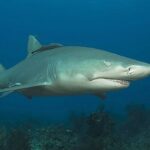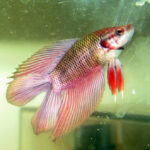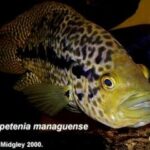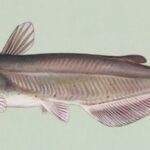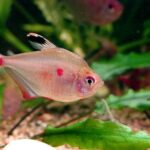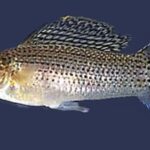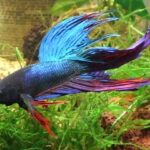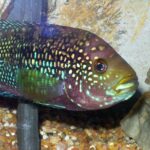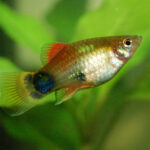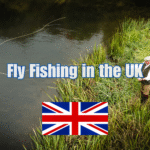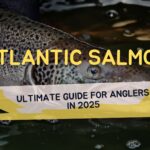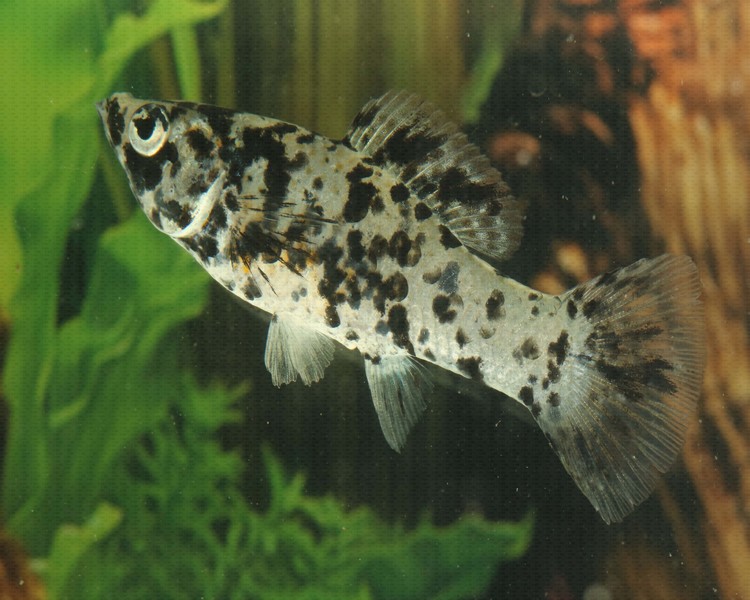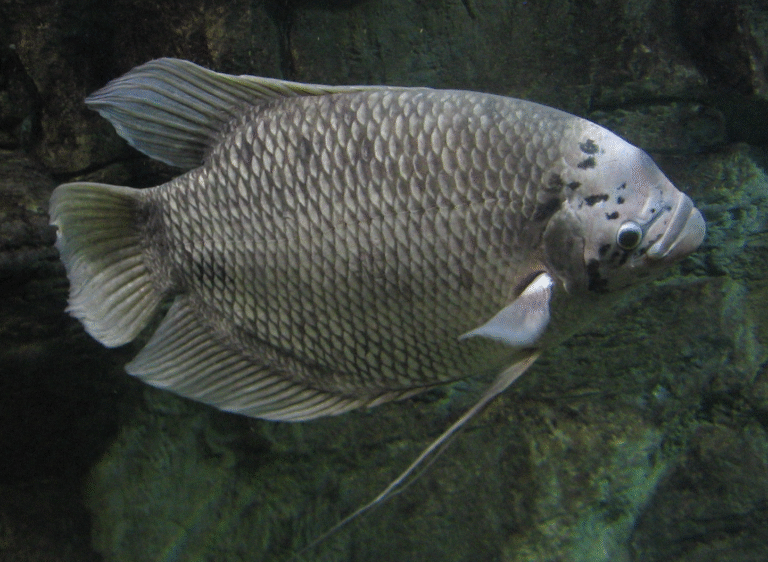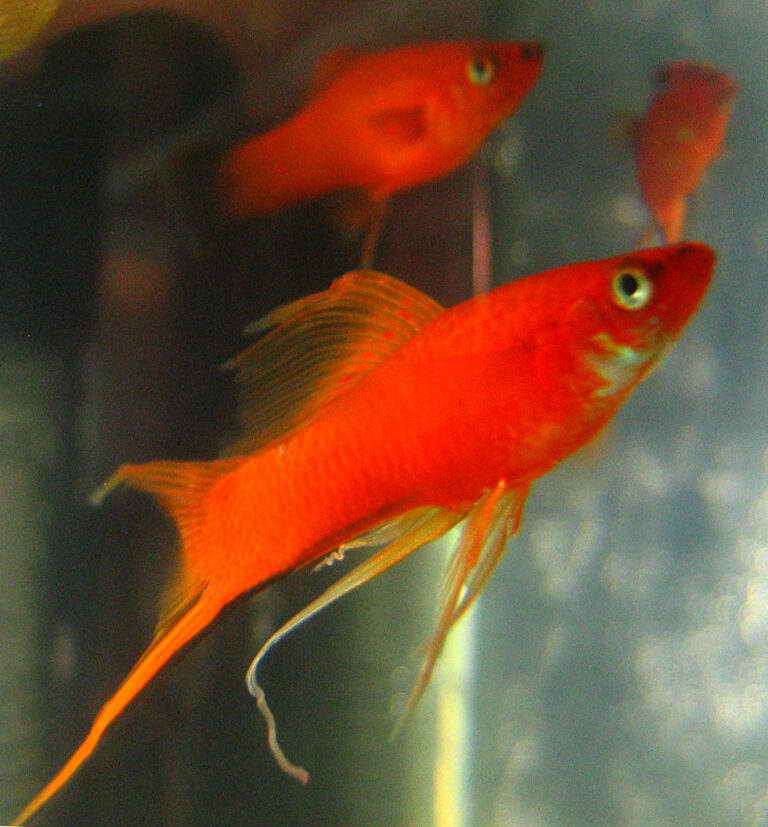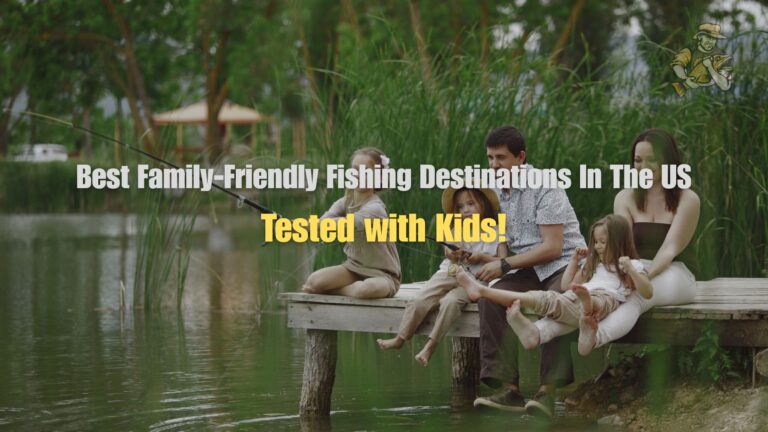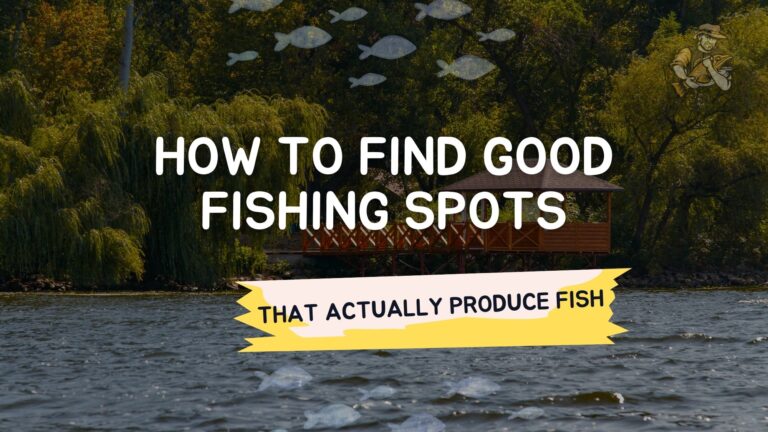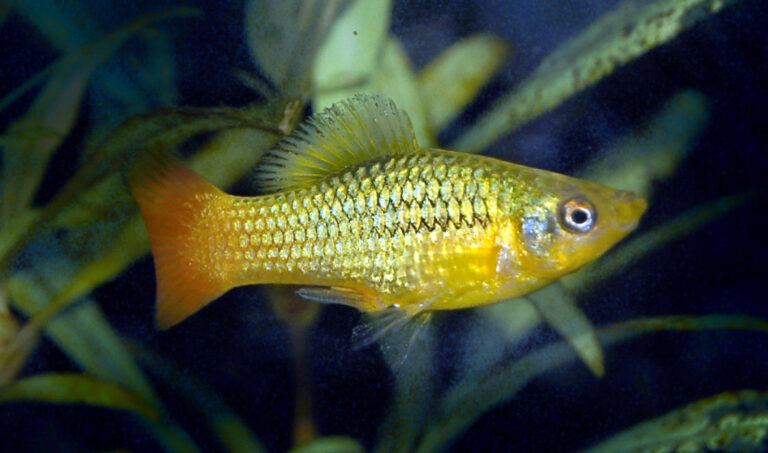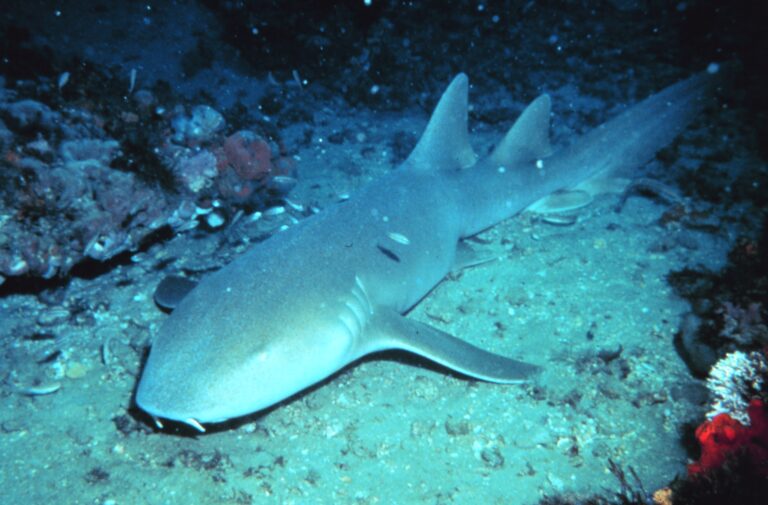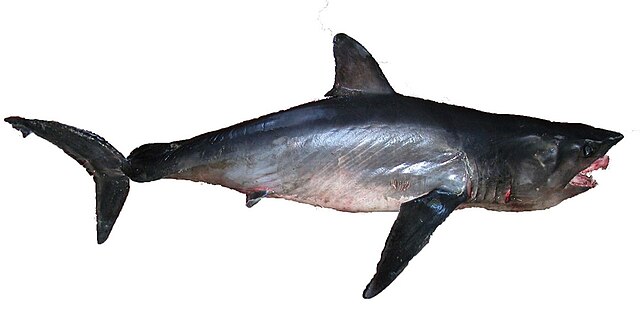Serpae Tetra
By Ryan Maron | Last Modified: June 7, 2025
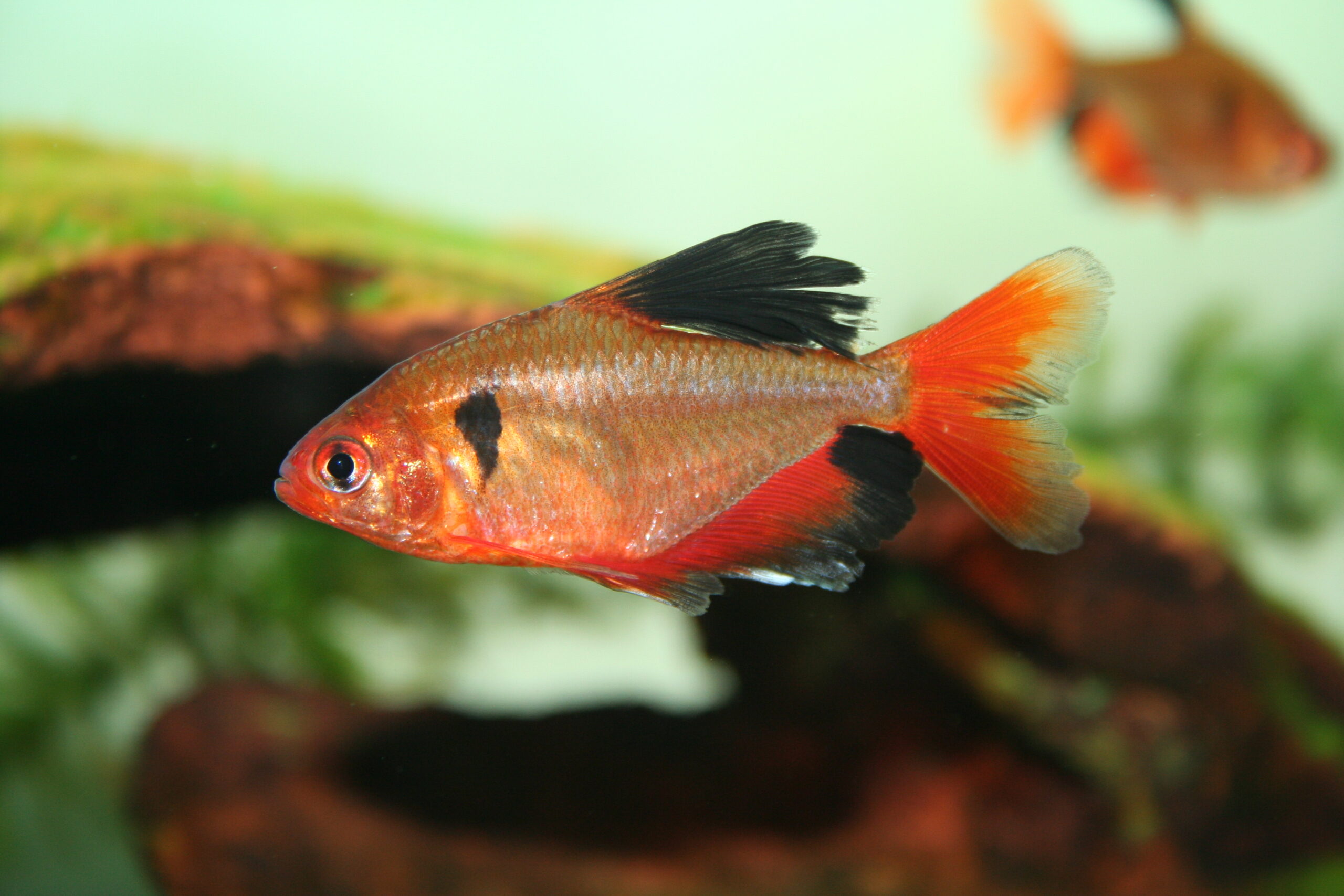
The Serpae Tetra (Hyphessobrycon eques) stands as one of South America’s most recognizable freshwater aquarium species, distinguished by its vibrant red-orange coloration and distinctive black dorsal fin marking. This small characin has captured the attention of aquarists worldwide for over seven decades, becoming a cornerstone species in community tank setups despite its occasionally assertive temperament. Native to the Amazon and Paraguay river basins, the Serpae Tetra plays a crucial ecological role as both predator of small invertebrates and prey for larger fish species, contributing to the complex food web dynamics of Neotropical freshwater ecosystems. Understanding this species’ natural history, behavior patterns, and ecological requirements provides valuable insights into the biodiversity and conservation challenges facing South American aquatic environments.
| Feature | Details |
|---|---|
| Common Name | Serpae Tetra |
| Scientific Name | Hyphessobrycon eques |
| Family | Characidae |
| Typical Size | 4-5 cm (1.5-2 inches), 2-4 grams |
| Habitat | Slow-moving rivers and tributaries |
| Diet | Omnivorous – insects, plant matter, small invertebrates |
| Distribution | Amazon Basin, Paraguay River system |
| Conservation Status | Least Concern |
Taxonomy & Classification
The Serpae Tetra belongs to the family Characidae, one of the most diverse freshwater fish families in the Neotropical region, encompassing over 1,200 described species. Originally described by Steindachner in 1882, Hyphessobrycon eques has undergone several taxonomic revisions throughout its scientific history. The genus Hyphessobrycon contains approximately 140 recognized species, making it one of the largest genera within the Characidae family.
Recent molecular phylogenetic studies have confirmed the Serpae Tetra’s placement within the subfamily Stethaprioninae, alongside other small-bodied South American tetras. The species exhibits close evolutionary relationships with Hyphessobrycon callistus (Jewel Tetra) and Hyphessobrycon bentosi (Bentos Tetra), sharing similar morphological characteristics and ecological preferences. These relationships reflect the adaptive radiation that occurred within Amazonian river systems over millions of years.
The taxonomic classification follows this hierarchy: Kingdom Animalia, Phylum Chordata, Class Actinopterygii, Order Characiformes, Family Characidae, Genus Hyphessobrycon, Species eques. Alternative common names include Red Minor Tetra, Callistus Tetra, and Blood Characin, though these names sometimes create confusion with closely related species. Genetic analysis has revealed significant population structure across the species’ range, suggesting potential subspecific variation that may warrant future taxonomic investigation.
Physical Description
The Serpae Tetra displays remarkable sexual dimorphism and age-related color variation that makes it instantly recognizable among South American characins. Adult specimens typically reach 4-5 centimeters in standard length, with females generally achieving slightly larger sizes than males. The species exhibits a laterally compressed body typical of the Characidae family, optimized for maneuvering through dense aquatic vegetation.
The most distinctive feature remains the vibrant red-orange base coloration that intensifies during breeding periods and territorial displays. A prominent black comma-shaped marking adorns the shoulder region immediately behind the operculum, serving as both a species identifier and potential intraspecific communication signal. The dorsal fin displays a distinctive black anterior edge with a white submarginal stripe, creating a striking contrast against the red body coloration.
Sexual dimorphism becomes apparent in mature specimens, with males developing more intense coloration and slightly elongated dorsal and anal fins. Females maintain a deeper body profile, particularly when gravid, and exhibit more subdued coloration patterns. The adipose fin, characteristic of characiform fishes, appears translucent with a slight reddish tinge. Scale counts typically range from 28-32 along the lateral line, with 4-5 scales above and 3-4 scales below the lateral line. The terminal mouth contains small conical teeth adapted for processing both plant material and small invertebrates, reflecting the species’ omnivorous feeding strategy.
Habitat & Distribution
Hyphessobrycon eques naturally inhabits the slow-moving waters of the Amazon Basin and Paraguay River system, spanning across Brazil, Paraguay, Argentina, and Bolivia. The species demonstrates remarkable adaptability to various aquatic environments, from blackwater tributaries with pH levels as low as 5.0 to clearer streams with more neutral water chemistry. Water temperatures in their native range typically fluctuate between 22-28°C (72-82°F), with seasonal variations corresponding to wet and dry periods.
These environments characteristically feature dense riparian vegetation that provides both shelter and food resources through terrestrial insect fallout. The Serpae Tetra preferentially occupies the middle to upper water column, utilizing overhanging branches and emergent vegetation as protection from aerial predators. Substrate composition varies from sandy bottoms in main river channels to leaf litter and detritus in smaller tributaries and backwater areas.
Water chemistry parameters in natural habitats show considerable variation depending on geological and seasonal factors. Conductivity levels range from extremely soft water in blackwater systems (10-50 μS/cm) to moderately soft conditions in whitewater tributaries (100-200 μS/cm). The species has demonstrated successful colonization of modified habitats including cattle ponds and irrigation channels, suggesting considerable ecological plasticity. Dissolved oxygen levels typically remain high due to constant water movement and photosynthetic activity from aquatic plants.
Geographic distribution extends from the upper Amazon tributaries in Peru and Colombia southward through the Pantanal wetlands of Brazil and Paraguay. Isolated populations exist in the Paraná River system, likely representing ancient connections between river basins during periods of lower sea level. Climate change and deforestation pressures continue to modify these habitats, potentially affecting long-term population stability in some regions.
Diet & Feeding Behavior
The Serpae Tetra exhibits opportunistic omnivorous feeding behavior that reflects its adaptability to diverse Neotropical aquatic environments. Stomach content analysis reveals a varied diet consisting of approximately 40% animal matter and 60% plant material, though these proportions fluctuate seasonally based on resource availability. Primary animal protein sources include chironomid larvae, small crustaceans, aquatic oligochaetes, and terrestrial insects that fall onto the water surface.
Plant matter consumption focuses on algae, detritus, and soft aquatic vegetation, with particular preference for periphyton growing on submerged surfaces. The species demonstrates distinct feeding periodicity, with peak activity occurring during dawn and dusk periods when many invertebrate prey species become more active. This crepuscular feeding pattern helps reduce competition with other fish species sharing similar habitats.
Foraging behavior involves both surface feeding and substrate picking, utilizing their terminal mouth position to effectively capture food items from various locations within the water column. Groups of Serpae Tetras often engage in coordinated feeding activities, with individuals taking turns approaching food sources while others maintain vigilance for potential predators. This cooperative behavior maximizes feeding efficiency while minimizing individual risk exposure.
Seasonal dietary shifts correspond to hydrological cycles in their native range, with increased insect consumption during rainy periods when terrestrial arthropods become more abundant in aquatic environments. During dry seasons, the diet shifts toward greater reliance on aquatic invertebrates and plant material. Juvenile specimens consume proportionally more zooplankton and small invertebrates compared to adults, reflecting their higher protein requirements for growth and development.
Behavior & Adaptations
Serpae Tetras exhibit complex social behavior patterns that have evolved in response to predation pressure and resource competition in Neotropical river systems. The species demonstrates facultative schooling behavior, forming loose aggregations of 10-50 individuals in natural environments, with group size varying based on habitat complexity and predator density. These schools provide enhanced predator detection capabilities through collective vigilance and confusion effects during escape responses.
Territorial behavior emerges during breeding periods, with dominant males establishing small territories around suitable spawning sites. Aggressive interactions include lateral displays, fin spreading, and direct physical contact, though serious injuries rarely occur. The distinctive dorsal fin coloration serves as a visual signal during these territorial encounters, with darker markings indicating higher aggression levels.
Communication occurs through both visual and chemical signals, with color intensity changes conveying information about reproductive status, dominance relationships, and stress levels. The species possesses well-developed chemoreception abilities, using olfactory cues to identify kin groups, detect predators, and locate food sources. Lateral line sensitivity allows detection of water movement patterns created by approaching predators or prey items.
Predator avoidance strategies include rapid burst swimming, seeking shelter in vegetation, and employing confusion tactics through synchronized schooling movements. The red coloration may serve as a warning signal to potential predators, suggesting unpalatability, though this hypothesis requires further investigation. Serpae Tetras demonstrate remarkable learning ability, quickly adapting their behavior in response to novel environmental challenges or predation threats.
Circadian activity patterns align with optimal feeding opportunities and reduced predation risk, with peak activity occurring during low-light conditions. Resting behavior involves seeking shelter in dense vegetation or forming tight aggregations near the substrate, reducing individual visibility to nocturnal predators.
Reproduction & Life Cycle
Hyphessobrycon eques exhibits a seasonal breeding pattern closely synchronized with hydrological cycles in their native Amazon Basin habitat. Reproductive activity peaks during the early wet season (October-December) when water levels begin rising and food availability increases substantially. This timing ensures optimal conditions for egg development and fry survival during the critical early life stages.
Sexual maturity occurs at approximately 8-10 months of age when fish reach 3-4 centimeters in length. Breeding behavior initiates with males establishing territories in areas with dense vegetation or suitable spawning substrates. Courtship displays involve intense color enhancement, circular swimming patterns around females, and gentle nudging behaviors that encourage spawning readiness.
The spawning process typically occurs during early morning hours, with pairs releasing eggs and sperm simultaneously over fine-leaved plants or spawning mops in aquarium settings. Females deposit 200-500 adhesive eggs measuring approximately 1.2 millimeters in diameter. These eggs attach to vegetation or substrate surfaces, where they undergo development over 24-36 hours depending on water temperature and oxygen levels.
Parental care remains minimal, with adults showing no protective behavior toward eggs or fry. Hatching produces larvae measuring 3-4 millimeters in length, initially relying on yolk sac nutrition for 3-4 days before beginning exogenous feeding. Free-swimming fry require microscopic food sources including infusoria, rotifer, and newly hatched brine shrimp nauplii.
Growth rates vary considerably based on temperature, food availability, and population density, with juveniles reaching adult coloration patterns at approximately 3-4 months of age. The species demonstrates protracted spawning behavior, with multiple reproductive events occurring throughout the breeding season rather than single mass spawning episodes. This reproductive strategy enhances survival probability by spreading temporal risk across varying environmental conditions.
Predators & Threats
Natural predation pressure on Serpae Tetras comes from multiple trophic levels within Neotropical freshwater ecosystems. Primary predators include larger characins such as Hydrolycus scomberoides (Payara), cichlids including Cichla species (Peacock Bass), and catfish species like Pseudoplatystoma fasciatum (Tiger Catfish). Aerial predators pose significant threats, particularly kingfishers, herons, and other piscivorous birds that target schools feeding near surface waters.
Juvenile Serpae Tetras face additional predation pressure from smaller fish species, aquatic insects, and invertebrate predators including dragonfly nymphs and water beetles. Egg and larval mortality rates remain high due to predation by various aquatic invertebrates, fungi, and other fish species that consume reproductive material opportunistically.
Human activities increasingly impact wild populations through habitat modification, pollution, and overcollection for the aquarium trade. Deforestation along riverbanks eliminates critical riparian vegetation that provides shelter and terrestrial food sources. Agricultural runoff introduces pesticides and fertilizers that alter water chemistry and reduce invertebrate prey availability.
Dam construction and water diversion projects fragment populations and alter natural flow regimes essential for successful reproduction. Mercury contamination from artisanal gold mining activities poses serious threats to entire aquatic ecosystems throughout the Amazon Basin. Climate change effects include altered precipitation patterns, increased water temperatures, and modified seasonal flooding cycles that disrupt reproductive timing.
Invasive species introductions create additional competitive pressure and predation threats in some regions. Aquaculture escapees may introduce diseases or genetic pollution that affects wild population integrity. Collection pressure for the international aquarium trade, while generally sustainable, can impact local populations when combined with other anthropogenic stressors.
Conservation Status
The International Union for Conservation of Nature (IUCN) currently classifies Hyphessobrycon eques as “Least Concern” based on its widespread distribution, stable population trends, and successful adaptation to modified habitats. However, this classification may not adequately reflect localized population declines occurring throughout portions of the species’ range due to intensifying anthropogenic pressures.
Population monitoring efforts remain limited across most of the Serpae Tetra’s distribution, making accurate abundance assessments challenging. Available data suggests stable populations in protected areas and remote regions with minimal human impact, while degraded habitats show evidence of declining abundance and reduced genetic diversity.
Conservation strategies focus primarily on habitat protection through establishment and enforcement of protected areas covering critical watershed regions. The Amazon Cooperation Treaty Organization coordinates multinational conservation efforts addressing transboundary water resource management and biodiversity protection. Brazil’s National Water Agency implements regulations governing water quality standards and habitat modification activities.
Research priorities include comprehensive population surveys, genetic diversity assessments, and climate change vulnerability studies. Scientific databases continue expanding knowledge of characin ecology and distribution patterns essential for effective conservation planning.
Sustainable aquaculture development offers potential solutions for reducing collection pressure on wild populations while meeting international market demand. Captive breeding programs have achieved remarkable success, with most aquarium specimens now derived from commercial breeding facilities rather than wild collection. These programs maintain genetic diversity through careful breeding management and periodic introduction of wild genetic material.
Community-based conservation initiatives engage local communities in habitat protection and sustainable resource management practices. Education programs highlight the ecological importance of native fish species and promote environmentally responsible fishing practices.
Human Interaction
The relationship between humans and Serpae Tetras extends far beyond their popularity in the global aquarium trade, encompassing cultural, ecological, and economic dimensions throughout their native range. Indigenous communities in the Amazon Basin have historically utilized small characins as supplementary protein sources, though Serpae Tetras typically represent only a minor component of subsistence fishing activities due to their small size.
Commercial aquarium trade represents the most significant form of human interaction with this species, with millions of specimens traded internationally each year. The development of successful captive breeding techniques during the 1960s revolutionized availability and dramatically reduced pressure on wild populations. Modern commercial breeding facilities primarily located in Southeast Asia, Eastern Europe, and South America now supply over 95% of the global market demand.
Scientific research applications include behavioral studies, toxicology testing, and ecological research investigating community dynamics in Neotropical fish assemblages. Tetra fish types serve as important model organisms for understanding schooling behavior, predator-prey relationships, and habitat requirements in tropical freshwater ecosystems.
Educational value extends to public aquariums, school programs, and citizen science initiatives that use Serpae Tetras to demonstrate South American biodiversity and aquatic ecosystem functions. Their hardy nature and distinctive appearance make them excellent ambassadors for conservation awareness programs highlighting Amazon Basin conservation needs.
Economic impacts in range countries include employment opportunities in collection, breeding, and export industries. Small-scale fish farmers often include Serpae Tetras in polyculture systems, providing supplementary income while maintaining genetic resources. Tourism activities such as snorkeling and underwater photography in natural habitats generate additional economic benefits for local communities.
Regulatory frameworks governing international trade operate under CITES guidelines, though Serpae Tetras currently require no special permits due to their stable conservation status. National regulations in range countries establish quotas and licensing requirements for commercial collection activities.
Interesting Facts
Serpae Tetras possess remarkable longevity for their size, with documented lifespans reaching 7-8 years in optimal aquarium conditions, significantly exceeding the 3-4 year lifespan typical of similar-sized tropical fish species. This longevity likely reflects evolutionary adaptations to survive periodic environmental challenges in their dynamic Amazonian habitat.
The species demonstrates extraordinary color-changing abilities that extend beyond simple breeding coloration. Serpae Tetras can rapidly adjust their red pigmentation intensity within minutes in response to social hierarchy changes, stress levels, or environmental conditions. Dominant individuals display the most intense coloration, while subordinate fish exhibit paler hues to avoid aggressive encounters.
Unique physiological adaptations include specialized gill structures that enable efficient oxygen extraction in the oxygen-variable environments characteristic of Amazonian backwaters and flooded forests. During dry seasons when water oxygen levels decline, Serpae Tetras can increase their gill surface area by up to 30% to maintain adequate oxygen uptake.
Temperature tolerance ranges from 18-32°C (64-90°F), allowing survival through seasonal temperature fluctuations and temporary habitat changes. This thermal flexibility contributed to their successful establishment in modified habitats and aquaculture systems worldwide.
Recent genetic studies revealed that Serpae Tetras possess unusual chromosomal arrangements with 2n=50 chromosomes, differing from the more typical 2n=48 found in most closely related species. This chromosomal variation may contribute to their adaptive flexibility and successful colonization of diverse habitats.
The species exhibits left-right brain specialization similar to higher vertebrates, with the right eye preferentially used for predator detection while the left eye focuses on food location and social interactions. This neurological organization enhances survival efficiency by allowing simultaneous processing of different environmental information types.
Sound production capabilities through specialized muscle contractions create low-frequency vibrations used for short-range communication during spawning and territorial interactions. These acoustic signals remain largely inaudible to human hearing but play important roles in intraspecific communication.
Frequently Asked Questions
How can you distinguish male and female Serpae Tetras?
Sexual dimorphism in Serpae Tetras becomes apparent in mature specimens over 8-10 months old. Males develop more intense red-orange coloration with pronounced black markings, particularly during breeding periods. They also exhibit slightly elongated dorsal and anal fins with pointed tips. Females maintain rounder body profiles, especially when gravid, and display more subdued coloration patterns with softer fin edges. The body depth difference becomes most noticeable when females carry eggs, creating a distinctly fuller appearance compared to the more streamlined male silhouette.
What water conditions do Serpae Tetras require in captivity?
Optimal aquarium conditions replicate their native Amazon Basin parameters with temperatures between 23-27°C (73-81°F) and pH levels ranging from 6.0-7.5. Water hardness should remain relatively soft at 5-15 dGH, though the species adapts to moderate hardness levels. Consistent water quality with regular partial water changes prevents stress-related health issues. Dense vegetation and subdued lighting create security while allowing natural behavioral expression. Good filtration maintains water quality while gentle current mimics their natural slow-moving river habitat.
Are Serpae Tetras aggressive toward other fish species?
Serpae Tetras exhibit semi-aggressive behavior that varies significantly based on group size, tank conditions, and tankmate selection. When kept in groups of 6 or more individuals, intraspecific aggression typically remains contained within the school. However, they may nip at slow-moving fish with long fins or display territorial behavior toward similar-sized species. Compatible tankmates include other robust South American species like Corydoras catfish, larger tetras, and peaceful cichlids. Avoiding delicate or long-finned species prevents stress and injury issues.
How do Serpae Tetras contribute to their ecosystem?
As mesopredators in Neotropical freshwater ecosystems, Serpae Tetras occupy a crucial position controlling invertebrate populations while serving as prey for larger fish species. Their omnivorous feeding behavior helps transfer nutrients between terrestrial and aquatic environments through consumption of fallen insects and subsequent excretion. School feeding activities create disturbances that increase oxygen mixing and nutrient distribution in slow-moving waters. Their role as intermediate consumers supports ecosystem stability by preventing any single prey species from dominating the invertebrate community structure.
Conclusion
The Serpae Tetra represents a remarkable example of evolutionary success within South American freshwater ecosystems, demonstrating exceptional adaptability while maintaining critical ecological functions as both predator and prey species. Their continued abundance despite increasing anthropogenic pressures reflects the resilience that characterizes many Amazonian fish species, though ongoing conservation efforts remain essential for long-term population stability. Understanding the complex ecological relationships and behavioral adaptations of species like Hyphessobrycon eques provides valuable insights for freshwater conservation strategies and sustainable aquaculture development throughout the Neotropical region.
Share The Article:
More Fish Species:
-
Marble Molly
The Marble Molly (*Poecilia latipinna*) stands as one of the most recognizable and widely distributed ornamental fish species in…
-
Blue Catfish
The Blue Catfish (Ictalurus furcatus) stands as North America’s largest freshwater catfish species and represents one of the continent’s…
-
Lyretail Molly
The Lyretail Molly (*Poecilia latipinna*) stands as one of the most recognizable and ecologically significant freshwater fish species in…
-
Giant Gourami
The Giant Gourami (Osphronemus goramy) represents one of the most remarkable freshwater fish species in Southeast Asia, distinguished by…
-
Red Swordtail
The Red Swordtail stands as one of the most recognizable and cherished freshwater aquarium fish in the world. Known…
-
Flame Tetra
The Flame Tetra (Hyphessobrycon flammeus) stands as one of the most recognizable and beloved freshwater aquarium species in the…
Discover
-
7 Best Family-Friendly Fishing Destinations in the U.S. (Tested with Kids!)
I still remember the first time I took my son Tommy fishing. He was five, armed with a Spider-Man…
-
How to Find Good Fishing Spots That Actually Produce Fish
Finding productive fishing spots is often what separates successful anglers from those who go home empty-handed. It’s not just…
-
King Mackerel Fishing: Top Strategies for Landing Smokers
Some days on the water just stick with you. Few things compare to that first time a king mackerel…
-
How to Set Up a Fishing Pole For Beginners
After three decades of teaching friends and family how to fish, I’ve learned that setting up a fishing pole…
-
Texas Fishing License Guide: 2025 Costs & Requirements
I still remember the day a Texas game warden approached me on Lake Texoma while I was reeling in…
-
Pacific Northwest Salmon Fishing: Guide to Puget Sound and Columbia River
There’s something almost magical about the way Pacific Northwest salmon fight on the end of your line. I still…
Discover
-
Variable Platyfish
The Variable Platyfish (Xiphophorus variatus) stands as one of the most widely recognized and ecologically significant freshwater fish species…
-
Nurse Shark
The Nurse Shark (Ginglymostoma cirratum) stands as one of the most recognizable and ecologically significant bottom-dwelling sharks in tropical…
-
Longfin Mako Shark
The Longfin Mako Shark represents one of nature’s most enigmatic and misunderstood predators, embodying both the raw power and…
-
7 Best Places to Go Fishing in Florida (2025 Guide for All Anglers)
Florida’s known as the Fishing Capital of the World for good reason. With over 7,700 lakes, 10,550 miles of…
-
East Coast Surf Fishing: Targeting Striped Bass and Bluefish from Shore
When I first tried East Coast surf fishing nearly 15 years ago, I was absolutely terrible at it. I…
-
Fishing in Long Beach: Best Guide (Local Secrets Revealed)
There’s something magical about casting a line along the Southern California coast, especially when fishing in Long Beach. I’ve…

